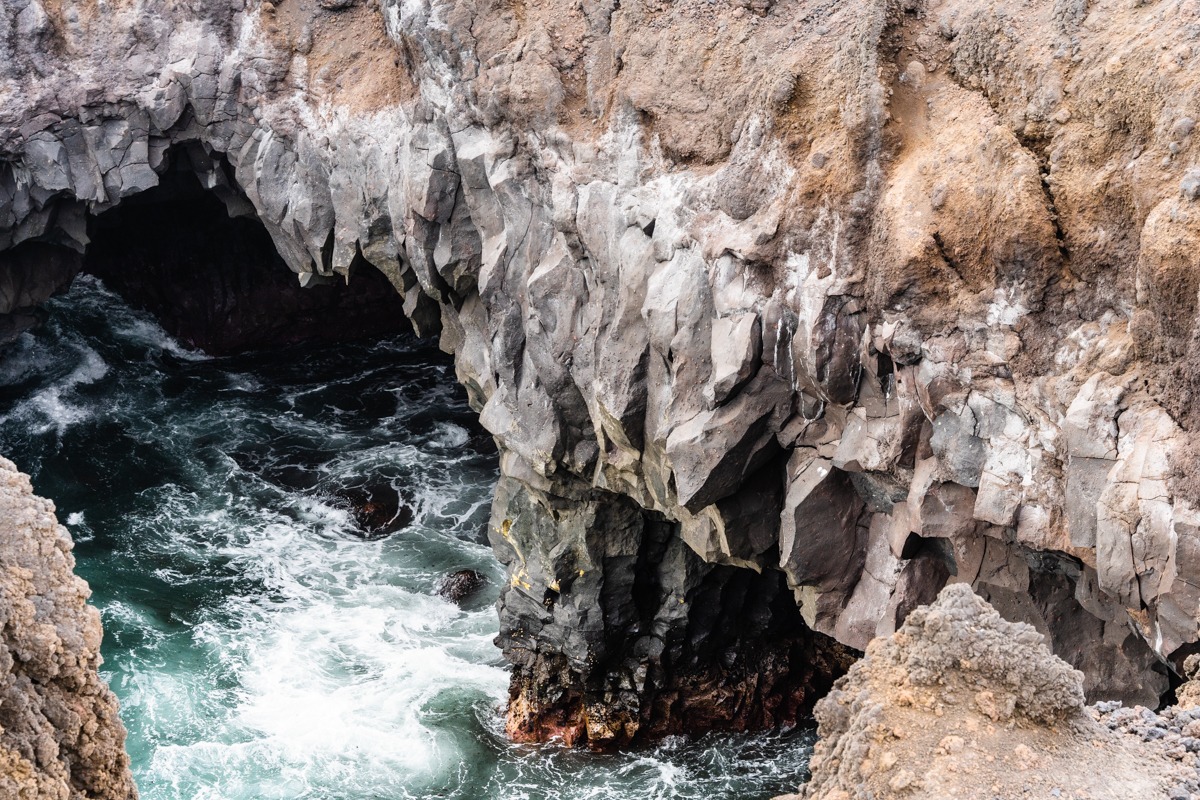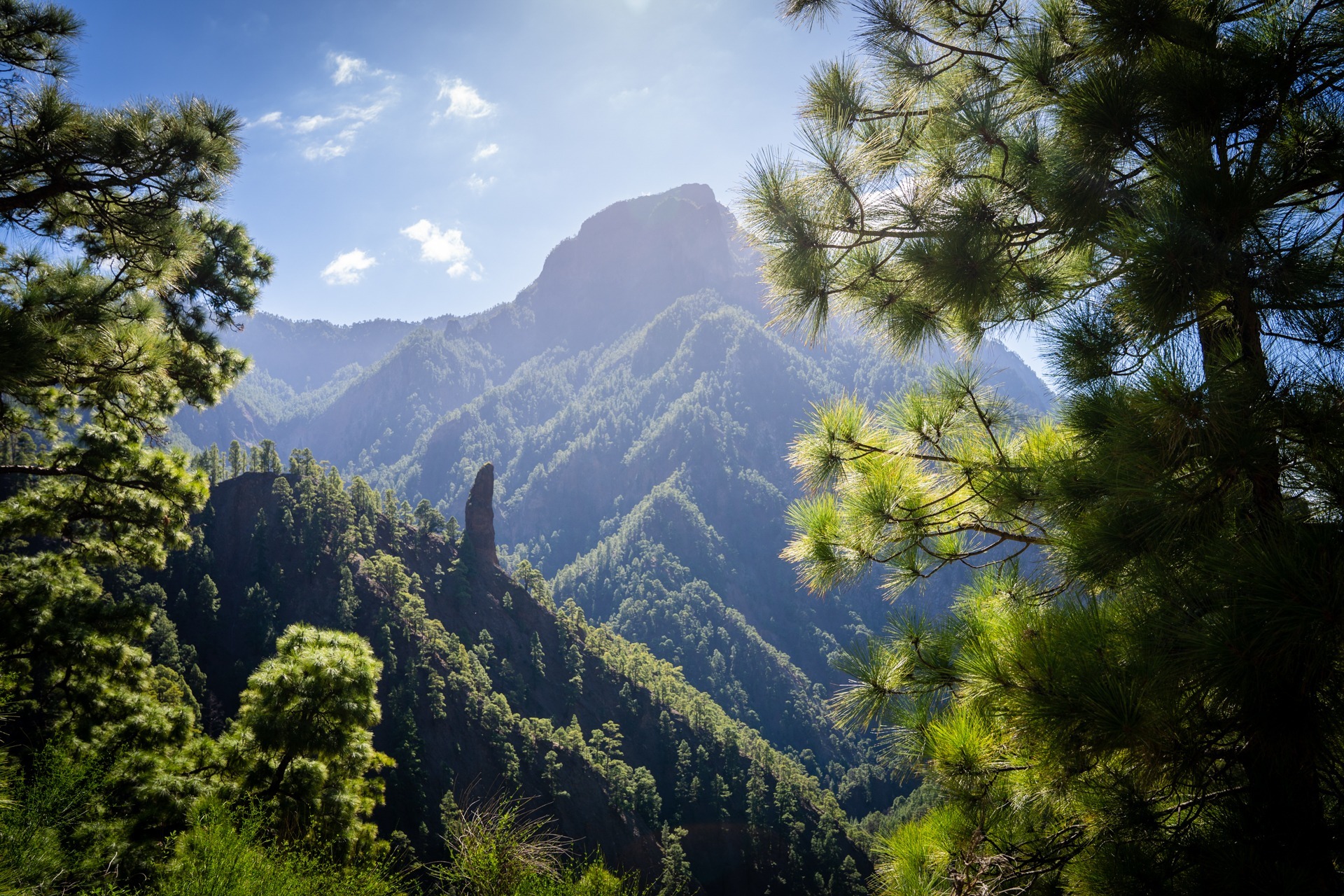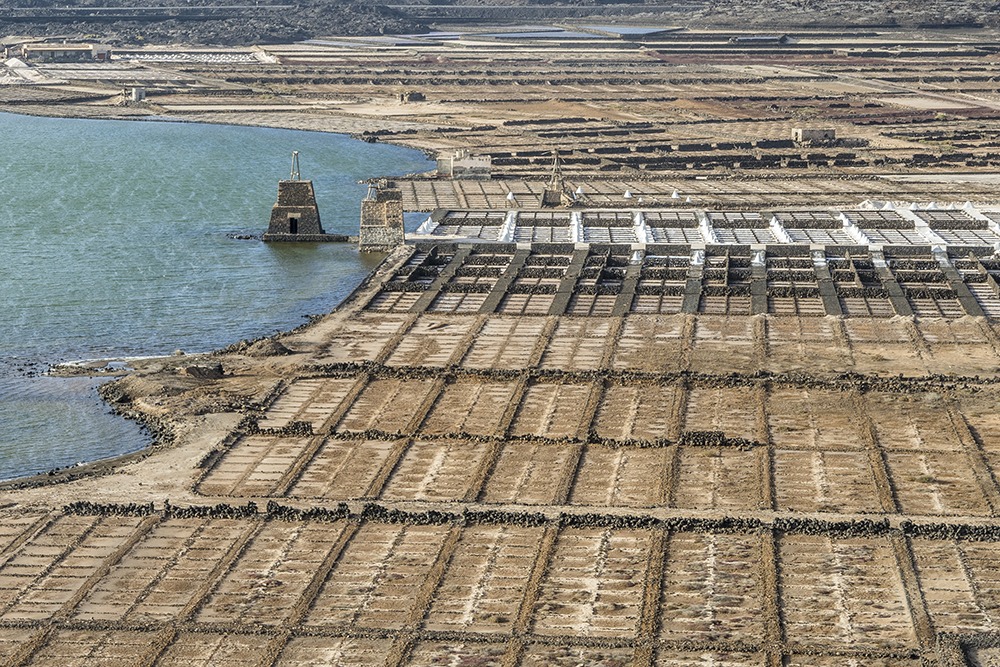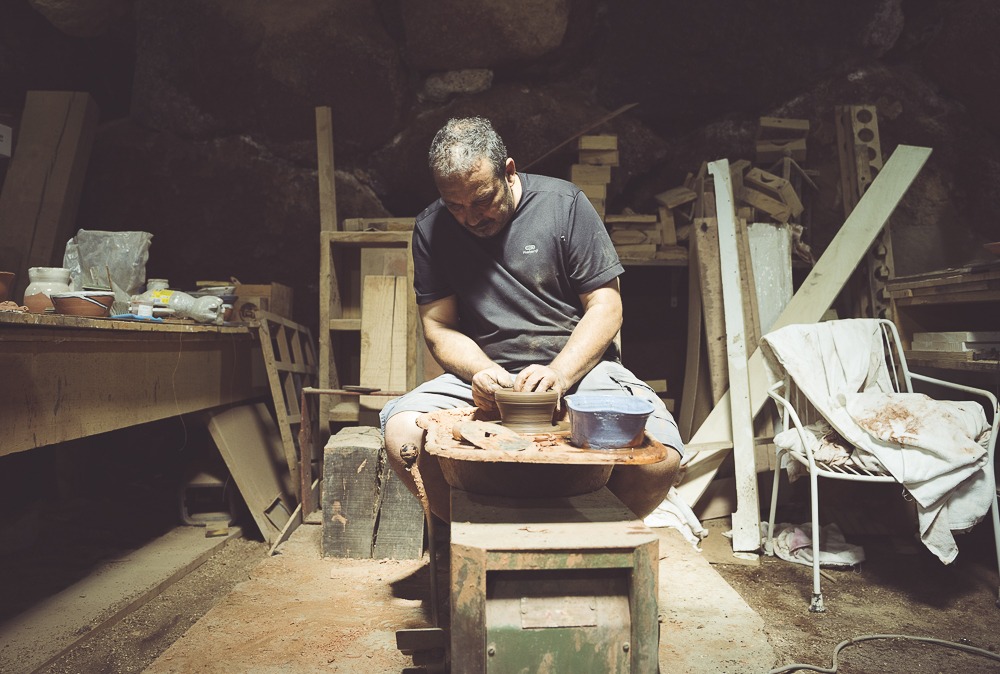
Caldera de Taburiente
National Park, La Palma, Canary Islands
The caldera is about 10 km across and in places the walls tower 2000 m over the caldera floor. The caldera was not formed by an explosion of that volcano, however, but by erosion starting from the volcano’s original crater.
In respect of its importance in the development of volcanology, ‘Taburiente volcanic Caldera’ was included by the International Union of Geological Sciences (IUGS) in its assemblage of 100 ‘geological heritage sites’ around the world.
The main flora of the national park comprises a large forest of Canary Island Pine, with a population of the endangered Canary Islands Juniper also present. The park has been recognised as an Important Bird Area (IBA) by BirdLife International because it supports populations of laurel pigeons, red-billed choughs and Atlantic canaries.
During the Spanish conquest of the Canary Islands in the 15th century, the caldera was the site of the last stand of the indigenous people of the archipelago, a branch of the Guanches known as Benahoaritas.
















